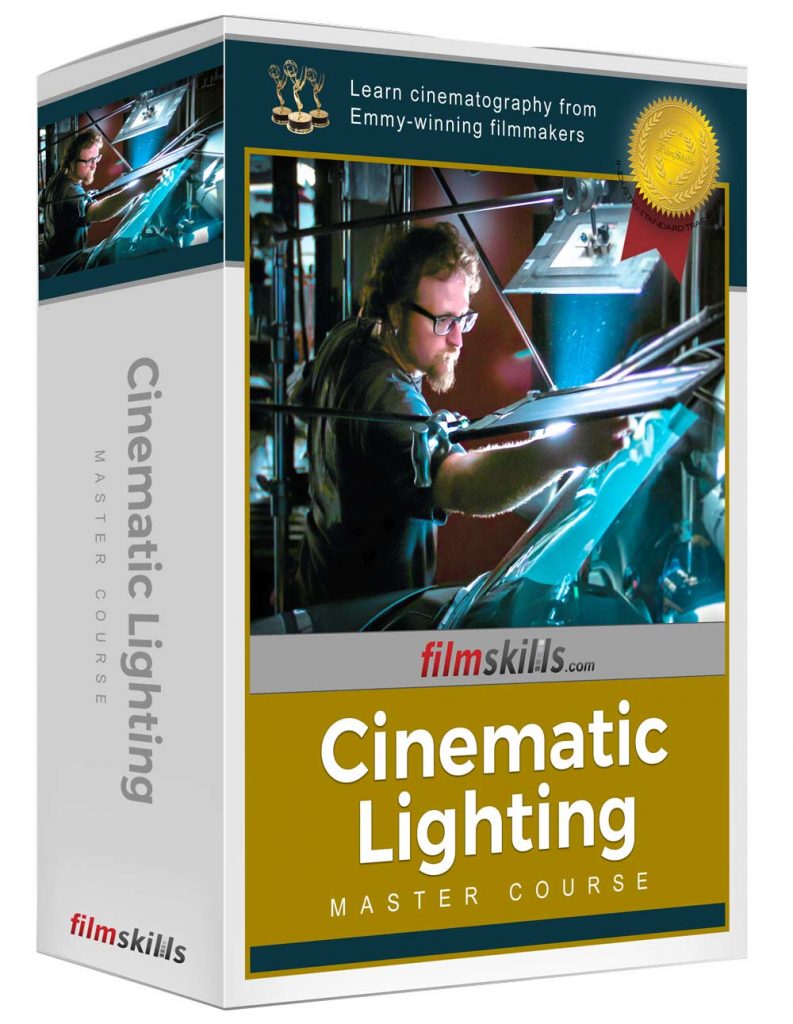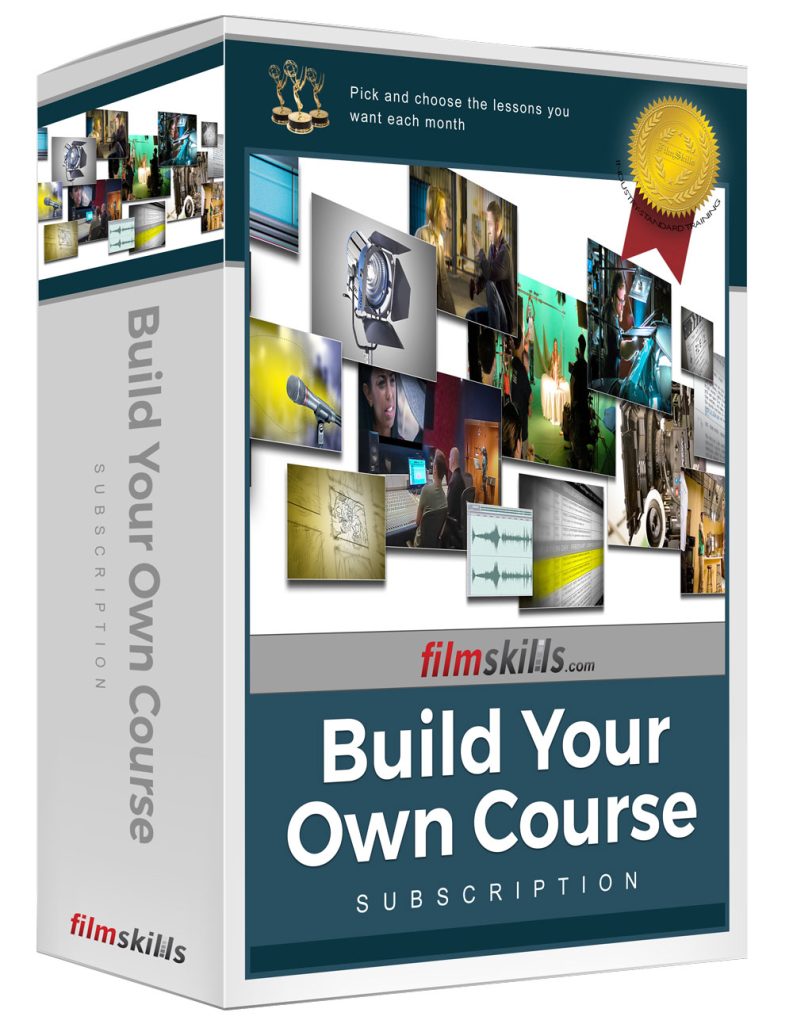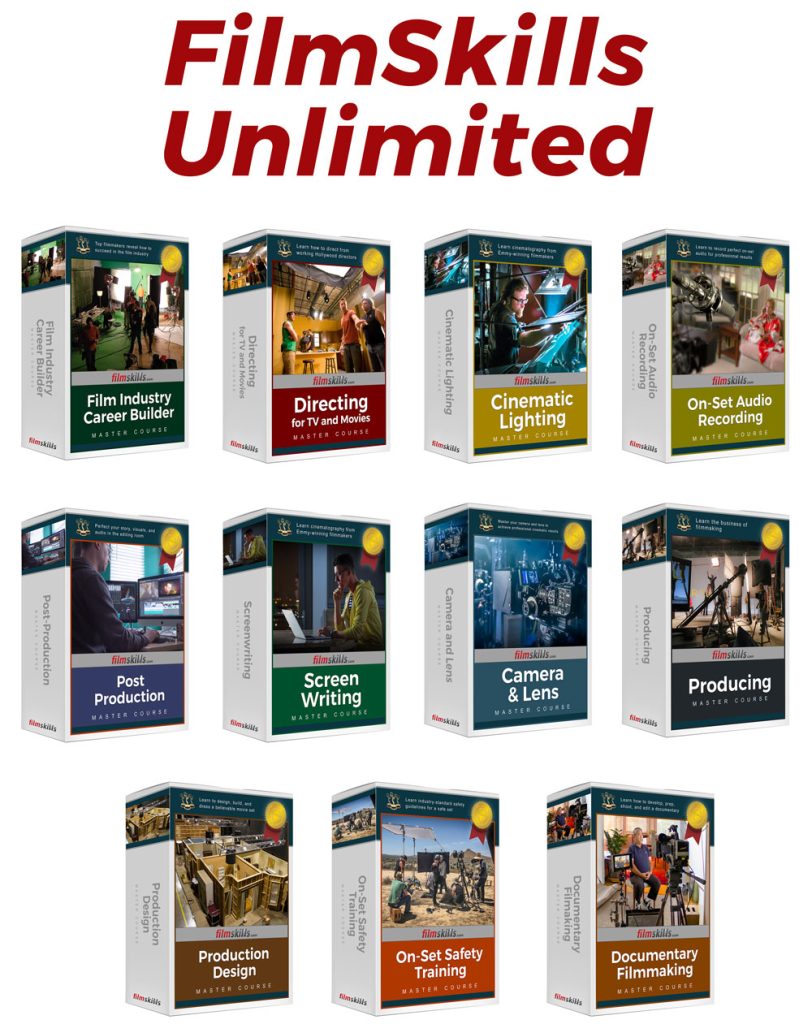The Complete Filmmaking Curriculum
Over a hundred Hollywood professionals helped build a comprehensive filmmaking curriculum.
Cinematography - Lighting
Go on set with Emmy and Academy Award-winning cinematographers as they teach you the art and craft of cinema lighting. Learn the tools used in creating, shaping, and softening light to achieve the look you want on set.
Section 1: Lighting Tools
Learn how to use professional lighting gear, when to choose the right light, and the benefits and limitations of each one.
Tungsten Lighting
Learn how to work with, operate and trouble shoot tungsten lighting fixtures. (11:48)
HMI Lighting
Learn about HMI light fixtures, how to operate, maintain and troubleshoot them. (19:22)
Kino-Flo Lighting
Learn how to properly use Kino-Flo lighting fixtures, ballasts, bulbs, and accessories on set. (14:20)
LED Lighting
New LED technology is appearing on sets around the world. Learn how LED lighting can add to your lighting toolbox. (7:10)
Low Budget Lighting Tools
Lighting equipment can be expensive, or unavailable. In this module, we’re going to show you simple, inexpensive lighting options for your shoot. (9:37)
How to Build a Light Kit
Light kits are self-contained, portable lighting kits. In this module, you will learn how to build a light kit, the pricing options and additional tools we’d recommend you always have on set. (15:31)
Section 2: Lighting Techniques
Learn professional techniques for creating, crafting, shaping, and softening light for perfects results.
Creating Soft Light
In this in-depth tutorial, students learn how to create soft light using a variety of techniques. (26:50)
- How to control the size of a light source
- Using Fresnels to craft the spread of light
- Controlling wraparound
- Working with diffusion on barn doors
- Working with soft boxes and Chimeras
- Skinning 4x4s
- Working with 6×6 overheads
- How to control spill from soft light sources
- Real world demo
Techniques to Reduce Light
The all-new video tutorial methodically guides students through the tools and techniques used to reduce light on your subject. (26:43)
- Working with wire scrims
- Working with dimmers
- Remotable Wi-Fi dimming options
- Solids, cutters, and floppies
- Creating negative fill
- Lensers and Courtesies
- Protecting fabric scrims
- Scrim and C-stand rigging safety
- Neutral Density gel on windows
Techniques to Shape Light
Creating light is easy – the art of lighting is in how the light is shaped. In this lesson, students experience industry-standard techniques to shape light to create the desired look. (23:53)
- The power of shadows
- Creating internal vs external shadows
- Benefits and drawbacks of barn doors
- Working with black wrap
- Egg crates and louvres
- Flags and solids
- Creating gobos
- Working with a cucoloris and brancholoris
- Building duvatyne skirts
Working with Reflected Light
While the previous lessons teach direct lighting techniques, this lesson shows students techniques on how to work with bounced and reflected light. (19:18)
- Factoring in the Inverse Square Law
- Foam core and bead board
- Collapsible reflectors
- Shiny boards
- Physics of reflected light
- Bouncing light off ceiling
- Working with overheads
- Shaping hair lights
- Working with mirrors
Watch a free lesson from this series
Color Temperatures and White Balance
The all-new video tutorial introduced students to color theory, how color is rendered on screen, and how common light sources appear on screen. (26:22)
- Defining how a camera sees white
- The Kelvin scale – origins and how it’s used
- How the imaging sensor sees color
- Measuring light sources with a spectrometer
- White balancing techniques
- How to cheat white balance
Attributes of Light
Learn the basic attributes of light and how to craft it to achieve the ideal cinematic look. (34:02)
Working with Mixed Light
From gelling lights to working with variable-color temperature LEDs, students learn how to color balance lights on set to achieve the desired look. This lesson covers:
- How to use gels to color correct light sources
- Light loss calculations through gels
- Working with LEDs
- Working with sunlight
- How to gel windows
Lighting a Scene
Learn how to assess an existing location, scene blocking and existing lighting to determine the best way to light a set. (24:42)
Lighting Outside
Learn how to light actors outside using only sunlight, reflectors and diffusion. (23:10)
Lighting People
Learn how to use the three-point lighting system to properly light people. (23:36)
Key Light Techniques
Learn advanced techniques for shaping your actor’s key light (25:20)
Advanced Lighting Techniques
Learn advanced lighting techniques to add style and quality to your shot (17:15)
Section 3: On-Set Lighting Tutorials
In this brand-new 9 part series, go on location to learn the practical approach to cinematography, how to identify and overcome common production challenges, and how to achieve a professional, cinematic look.
Daytime Interior - Kitchen Counter
Learn how to address exposure issues when shooting on location with windows, how to gel windows, balance exposure, and create natural, motivated lighting.
Nighttime Interior - Living Room - Morning
In this on-location tutorial, students learn how to create a morning light on a nighttime set. From working with haze and creating volumetric light, students learn to block and light for a cinematic look.
Nighttime Interior - Bedroom
In this tutorial, students learn to shoot a realistic night scene that achieves the desired emotional tone, all while producing a clean, noise-free image.
Daytime Interior - Kitchen Table Parts I & II
One of the most common scenes in a student production is the interior dialogue scene. Students learn how to address exposure issues when shooting on location with windows, how to gel windows, balance exposure, and create natural, motivated lighting.
Nighttime Interior - Kitchen Table
Students learn how to shoot a nighttime dialogue scene between two people, on location. Covering both his and her shots, this tutorial guides students through the blocking, composition, and lighting decisions behind creating a cinematic night scene.
Daytime Interior - Bedroom
Students learn how to create a sculpted light in a bedroom interior during the day. In this lesson, students learn how to balance exposure between the subject and outside sunlight, all while creating a cinematic look.
Nighttime Interior - Living Room
In this lesson, students learn how to light and shoot a scene with practical light fixtures, how to enhance the light so it is motivated, and how to bring the outside into the latitude of the camera.
Daytime Interior - Bathroom
Shooting in a small, confined space like a bathroom creates a range of production challenges, which we systematically address in this engaging tutorial. From a simple bathroom to a dramatic shot, students learn how to achieve the desired look on set.
Watch a free lesson from this series
Section 5: Grip and Rigging
In this series, we introduce students to the grip and rigging gear commonly used on set, proper rigging techniques, safety standards, and life on set as a grip.
C-Stands
C-stands are one of the most commonly-used stands on set. In this module, students learn about the different types of C-stands, how to use them and C-stand safety. (20:27)
Stands
From baby and combo stands, to hi-his and low boys, students learn how to safety use industry-standard stands on set. (16:37)
Knots for On Set Rigging
Students learn the most common rigging knots used on set and how to safely tie them.
Doly and Track
Dynamic camera moves can add production value to practically any shoot. One of the most common ways of moving the camera is to lay down track and use a camera dolly. This module introduces students to the common doorway dolly, shows you how to set-it up and use it. (12:54)
Clamps
Students learn how to safely use mafers, cardellinis, C-clamps, furniture clamps, playtpus clamps, scissor clamps, gaffer grip, safe rigging safety. (23:36)
Grip Support
Students learn how to properly use apple boxes, sand bags, furniture pads, and taco carts on real-world sets. (8:02)
Grip Tools
Learn basic tools used by grips on set, including essential personal tools every grip is expected to have. (9:20)


